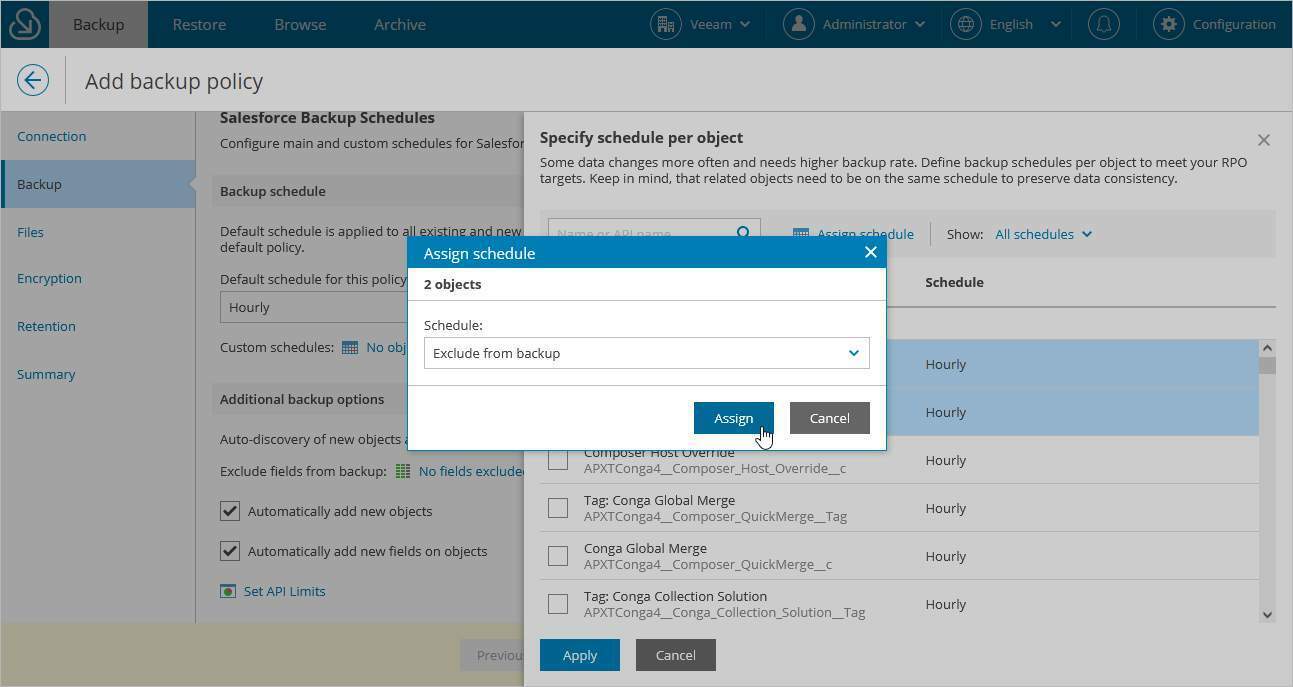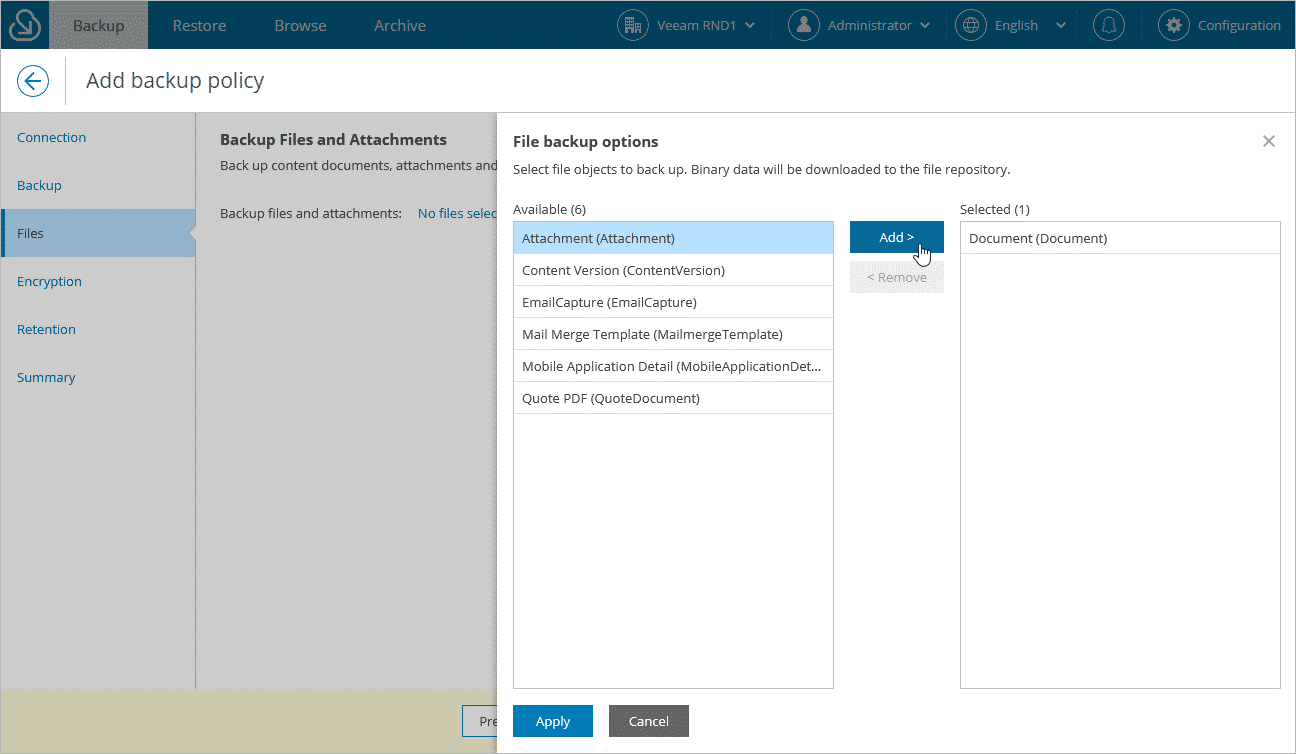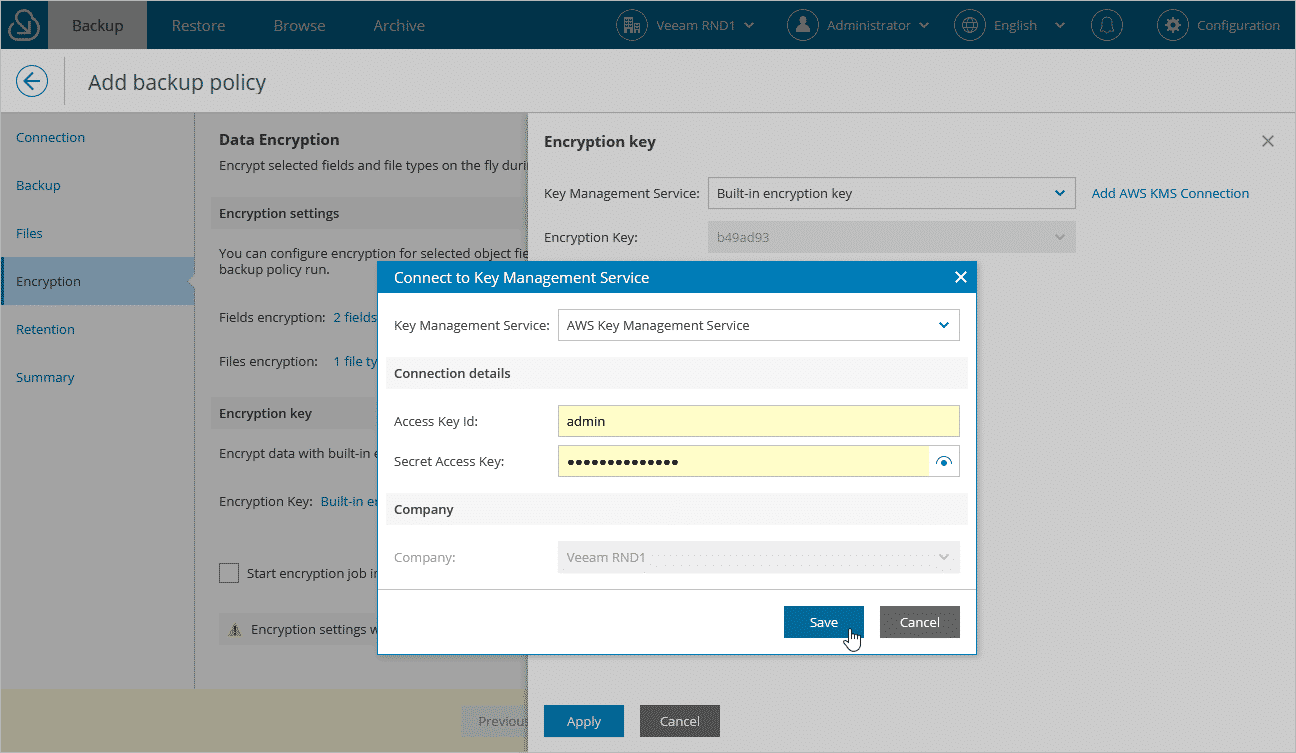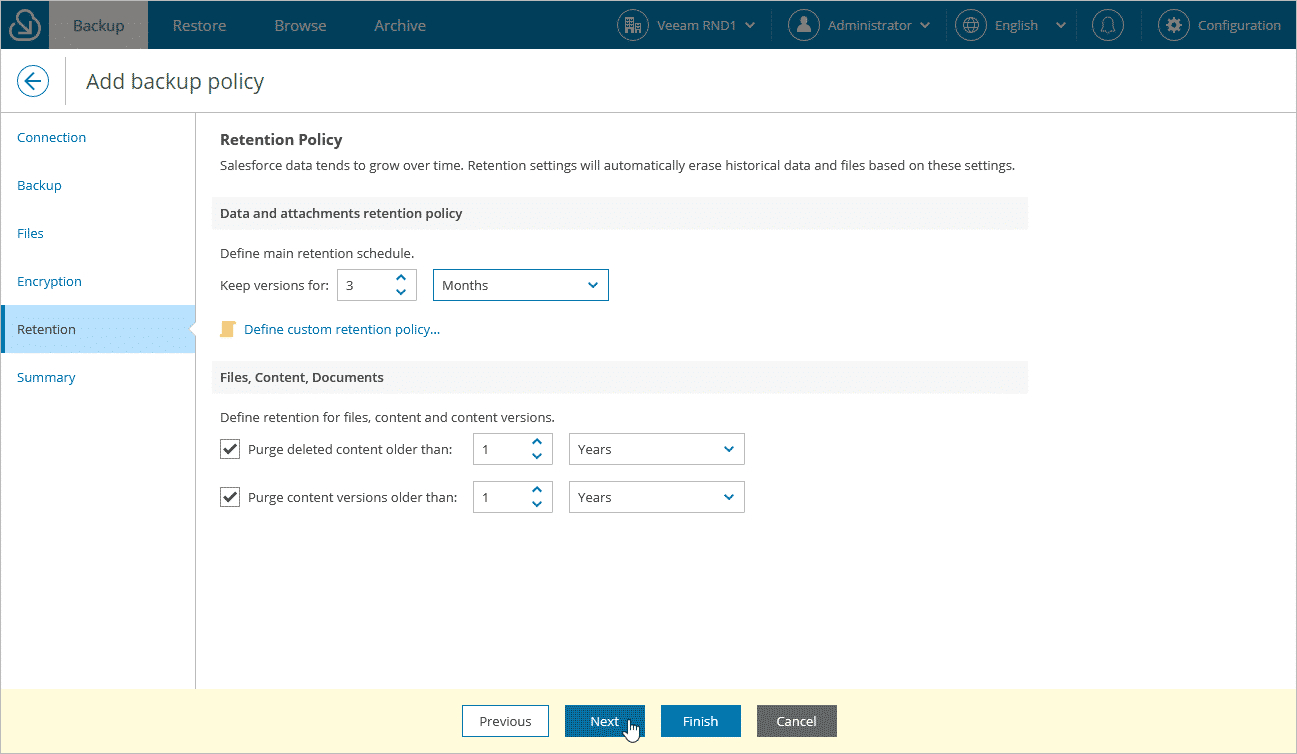Performing Backup Jobs
To perform backup of Salesforce organizations, Veeam Backup for Salesforce runs backup policies. A backup policy is a collection of settings that define the way backup operations are performed: what data to back up, where to store backups, when to start the backup process, and so on.
Launch Add Backup Policy Wizard

To launch the Add Backup Policy wizard, do the following:
-
Navigate to the Backup tab.
-
If you have added multiple companies to Veeam Backup for Salesforce, select a company to which the Salesforce organization whose data you want to protect belongs. To do that, select the company from the drop-down list at the top of the page.
-
Click Add
Step 1: Configure Connection to Salesforce Organization

At the Connection step of the wizard, connect to a Salesforce organization and specify a database that will be used to store backed-up data. Either connect to an existing organization already connected to Veeam Backup for Salesforce or connect to a new organization.
Step 2: Configure Backup Settings

In the Backup schedule section of the Backup step of the wizard, configure default and custom schedules for the backup policy. Veeam Backup for Salesforce has 3 built-in schedules:
-
Hourly — this schedule launches a backup policy session at the beginning of every hour.
-
Daily — this schedule launches a backup policy session every day at 00:00 UTC.
-
Weekly — this schedule launches a backup policy session every Sunday at 00:00 UTC.
Custom schedules can also be built in the creating schedules section.
Step 3: Enable Backup of Files and Attachments

At the Files step of the wizard, you can choose types of files that you want to back up. To do that, click the link in the Backup files and attachments field and select the necessary file types in the File backup options window. Veeam Backup for Salesforce will display in the Repository location field the local directory on the management server that will be used to store the backed-up files.
Step 4: Configure Encryption Settings

In the Encryption settings section, choose whether you want to encrypt specific object fields, file types or both. If you do not select any object fields or file types, this data will not be encrypted.
Step 5: Configure Retention Settings

At the Retention step of the wizard, you can configure retention settings for the backed-up data — a time period during which Veeam Backup for Salesforce keeps attachments that were deleted from Salesforce and history records. It allows you to consume less storage space by deleting attachments and history records that are older than the specified time period.
Performing Restore Jobs
To recover backed-up data, Veeam Backup for Salesforce runs restore jobs. When you create a restore job, it is created as a draft that you can further edit, remove, start and clone. Once the restore job is started, it can be only stopped or cloned.
You can create drafts of restore jobs that you want Veeam Backup for Salesforce to perform. After you create a draft, you can start the job right after you finish the restore job configuration wizard or later.
Veeam Backup for Salesforce offers the following restore options:
| Restore Records | Record restore jobs allow you to restore earlier versions of modified or corrupted records and linked objects. For a detailed process for Restoring Records click here |
| Restoring Metadata | Metadata restore jobs allow you to recover metadata of deleted objects as well as to restore metadata to another organization so that metadata of the object you want to restore matches metadata of the object in the target organization. |
| Restoring Field Values | Using this type of restore, you can restore field values only. If you want to restore the field itself, you must perform the metadata restore first. |
| Restoring Files | File restore jobs allow you to recover changed and deleted content and attachments. |
Let's Watch More about Veeam Backup for Salesforce Backup and Restore!
